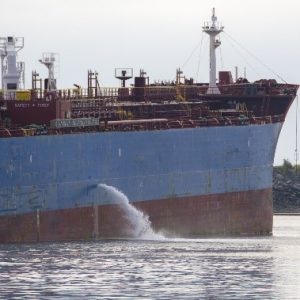 The World Chlorine Council (WCC) is pleased to highlight the effective use of chlorine chemistry to help preserve aquatic ecosystems around the world through ballast water treatment. Ballast water is the water taken into and discharged from ship ballast tanks to improve the vessel’s stability, buoyancy and maneuverability. Unfortunately, ballast water taken into a ship in one ecosystem that is later discharged into another ecosystem, can result in the spread of aquatic invasive species.
The World Chlorine Council (WCC) is pleased to highlight the effective use of chlorine chemistry to help preserve aquatic ecosystems around the world through ballast water treatment. Ballast water is the water taken into and discharged from ship ballast tanks to improve the vessel’s stability, buoyancy and maneuverability. Unfortunately, ballast water taken into a ship in one ecosystem that is later discharged into another ecosystem, can result in the spread of aquatic invasive species.
A case in point is the zebra mussel, which is indigenous to Russian and Ukrainian lakes and rivers, but now thrives in non-native freshwater environments worldwide. Zebra mussels clog water intakes, and displace native mussels, among other detrimental effects.
Under the International Maritime Organization’s Ballast Water Management Convention, ships of nations that are parties to the convention will be required to treat their ballast water before discharging it to receiving waters, to help protect aquatic ecosystems globally. This will help achieve the UN Sustainable Development Goal #14, which focuses on preserving life below water. Available ballast water treatment technologies include chlorine-based methods that employ hypochlorites or chlorine dioxide to destroy “stowaway” organisms in ballast water tanks. WCC’s new issue brief on this topic can be found here.